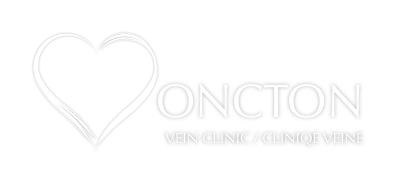Monday - Friday
8:00 AM - 4:00 PM
100 Arden St. (Suite 105)
Moncton, NB E1C 4B7
8:00 AM - 4:00 PM
Moncton, NB E1C 4B7
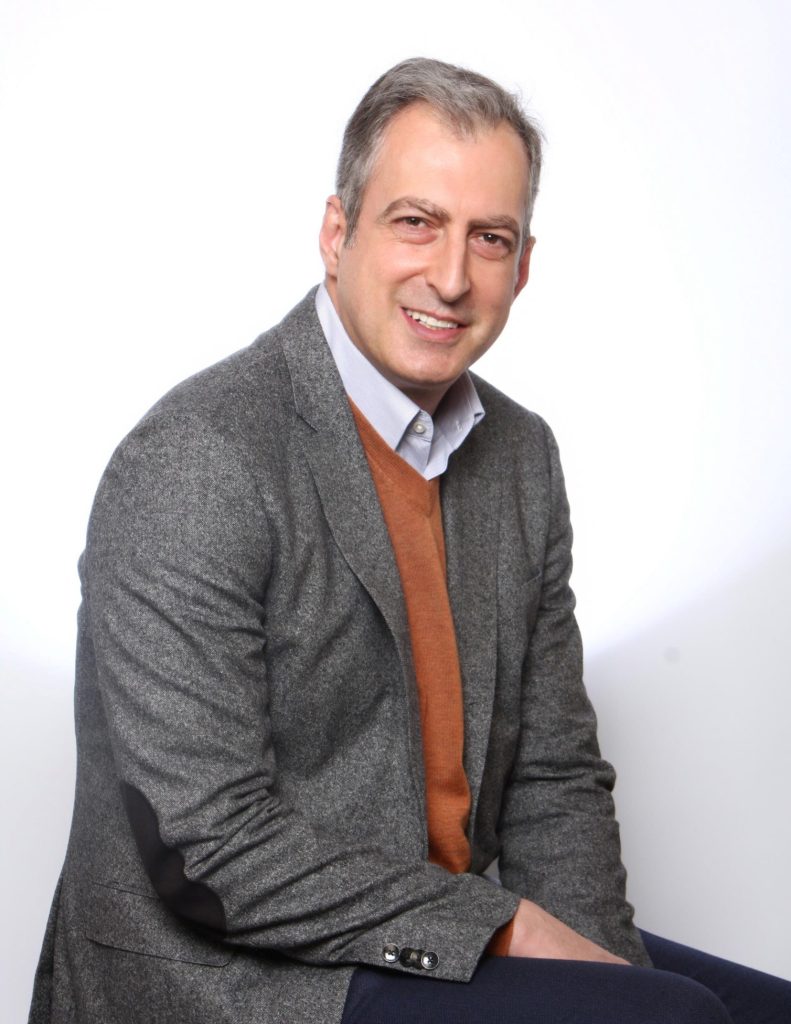
Historically, stripping of the Greater Saphenous Vein and removal of varicose veins under general anesthesia in a hospital setting has been the primary treatment of varicose veins.
This technique is traumatic to surrounding tissues and produces quite a lot of post-procedural discomfort, while patients must stay out of work for a few weeks post-surgery.
In our Vein Clinic we put emphasis on less invasive “office-based treatments” that require minimal anesthesia (local freezing), cause minimal post-procedural discomfort, and patients can return to work and their usual activities immediately after treatment.
VenaSeal is a new therapy. The VenaSeal system delivers a small amount of medical adhesive (cyanoacrylate ) to seal — or close — the diseased vein, rerouting blood to nearby healthy veins, which provides symptom relief. This glue has been in use in medicine in other parts of the body for over 50 years, and has been shown to be non-toxic, non-reactive, and safe. Rather than using laser energy to fuse the vein together, this procedure uses glue to shut the vein.
The Venaseal treatment provides two key advantages to patients. Firstly, during the procedure, because there is no laser required, there is no need to freeze along the entire length of the vein. This means that fewer freezing needles are required to perform the procedure. Secondly, after the procedure patients do not need to wear compression socks. Patients are likely to experience less bruising following the glue procedure, as well.
Results from a well performed randomized controlled trial were recently published comparing VenaSeal to other modalities, found a similar success rate (vein closure rate of 99%).
Like laser treatment, some perforating veins or large branches may need to be treated following the procedure at a later date, most of the time with sclerotherapy. Also, similar to the laser procedure, spider veins are unlikely to respond to VenaSeal and will require subsequent injections.
More than 100,000 patients have been treated with the VenaSeal closure system around the world.
The ClosureFast procedure is a thermal vein closure treatment (laser belongs also in this group of treatments). It uses radiofrequency energy or heat to close the diseased vein, which redirects blood flow to healthy veins, relieving symptoms.
How it works
The entire procedure is done in an office setting under local anesthetic which is used to freeze the skin and the area around the veins between the groin and the top of the leg. Using ultrasound, a catheter is positioned into the diseased vein through a small opening in the skin. The small catheter delivers heat to the vein wall, causing it to shrink and the vein to seal closed.
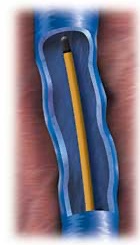
Disposable catheter
inserted into vein
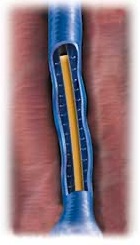
Vein heats
and collapses
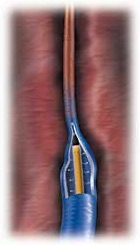
Catheter withdrawn,
closing vein
Following the procedure, a simple bandage is placed over the insertion site, and additional compression is provided to aid healing. Compression stockings needed for at least one week after procedure. Although walking is advised immediately after the procedure, patients should refrain from extended standing and strenuous activities for a few days.
The advantages of the ClosureFast procedure include:
Following the ClosureFast procedure visible varicosities often disappear, depending on their size and location. Regardless of the appearance of varicosities, symptoms are usually improve significantly or resolve entirely following the procedure. Sometimes large varicosities, or those fed by perforating veins may persist after ClosureFast treatment. These veins can be removed or be treated with sclerotherapy at a second stage. Any discolouration in the skin present before the procedure, especially if brown, is permanent and will not change after the treatment. In a minority of cases, after the procedure a small brownish bruise can form over resolving veins. These bruises are temporary but can take a long time to resolve (sometime more than a year).
What is sclerotherapy?
During sclerotherapy, a solution is injected directly into the varicose vein. The solution irritates the lining of the vein, causing it to swell and stick together. Over time, the vein turns into scar tissue that fades from view.
This therapy is most effective for small veins.
How successful is sclerotherapy in treating varicose and spider veins?
Sclerotherapy works well for most patients. It is an effective and safe treatment when used by trained and careful hands. Good technique, satisfactory imaging, general precautions, and compliance with post treatment instructions may help avoid some of the adverse events.
It is estimated that as many as 50 percent to 80 percent of injected veins may be eliminated with each injection session. In general, spider veins respond to treatment in 3 to 6 weeks, and larger veins respond in 3 to 4 months. If the veins respond to the treatment, usually they will not reappear. However, new veins may appear over time. If needed, you may return for injections. Following injections, patients should wear compression stockings for best results.
How will I know if I am a candidate for sclerotherapy?
During consultation we will discuss if this option is right for you, as not all patients are good candidates for this treatment.
You are not eligible for sclerotherapy if you are pregnant, breastfeeding, or are bedridden. You must wait at least three months after delivery before you can be considered for this procedure. You can have sclerotherapy if you take birth control pills. If you have had a blood clot in the past, your eligibility will be determined on an individual basis, and will depend on the extremity and the cause of the clot.
Will my insurance cover sclerotherapy?
The assessment is covered by Medicare with a valid health card and a referral from your family physician. Insurance companies do not provide coverage for sclerotherapy in most of the cases.
How will I feel?
Mild discomfort may occur when the veins are injected, and a cramping sensation may be felt for 1 to 2 minutes when larger veins are injected.
How long will the treatment last?
The sclerotherapy procedure takes about 15 to 30 minutes.
What happens after the treatment?
After the treatment you will be able to drive yourself home. You may resume your regular activities and are encouraged to walk. You will be instructed to wear support hosiery or compression wraps to “compress” the treated veins.
For 48 hours after the procedure, please follow these guidelines:
What are the side effects of sclerotherapy?
Side effects of sclerotherapy may include:
Small and medium size varicosities and spider veins are the most common types of varicose veins. They can be treated with sclerotherapy with usually good results.
Various solutions, such as saline-based, sotradecol, or polidocanol are injected into the varicose veins, to “irritate” the vein walls. This causes an inflammatory reaction which, in turn, causes the vein walls to stick together. If the treatment is successful, within a few weeks, the veins are “sclerosed” under the skin, and disappear without a trace. Our preferred sclerosing agent is sotradecol, most commonly used as foam.
The number of sclerotherapy sessions required, depends on the extent of the varicose vein disease. Some patients only need two or three sessions, while others need more. Each session lasts about 15-30 minutes. The treatment is not painful (maybe comparable to a mosquito bite), and it may leave some sensitivity for a day or two, like a bruise. Injections around the knees and ankles can cause mild swelling that will disappear after a few days.
Pain in the legs as well as general appearance of legs improve after sclerotherapy treatment. Properly treated varicose veins disappear for good.
Injections are administered at the clinic and the patient can immediately return home or back to work.
Large varicose veins can also be treated by sclerotherapy. The technique is usually the “ultrasound guided foam sclerotherapy”, where the injection is monitored on the screen of the ultrasound device. Ultrasound-Guided Foam Sclerotherapy is effective in treating even the most dilated varicose veins.
Ultrasound-guided foam injections have provided excellent results when administered properly. It is a safe procedure that rarely causes serious complications. We often use this technique to treat the branches of the Greater and Short saphenous veins or perforators after Venaseal treatment. Also, it is a good option for recurrent varicose veins after surgical treatment.
Ultrasound-guided large varicose veins injections are administered at the clinic and the patient can immediately return home or back to work.
Custom-fit compression stockings are an effective treatment for the symptoms of varicose veins. For best results, they should be worn every day, especially during periods of prolonged standing and walking.
During your consultation you will be provided with a prescription for the stockings that are most suitable for you.
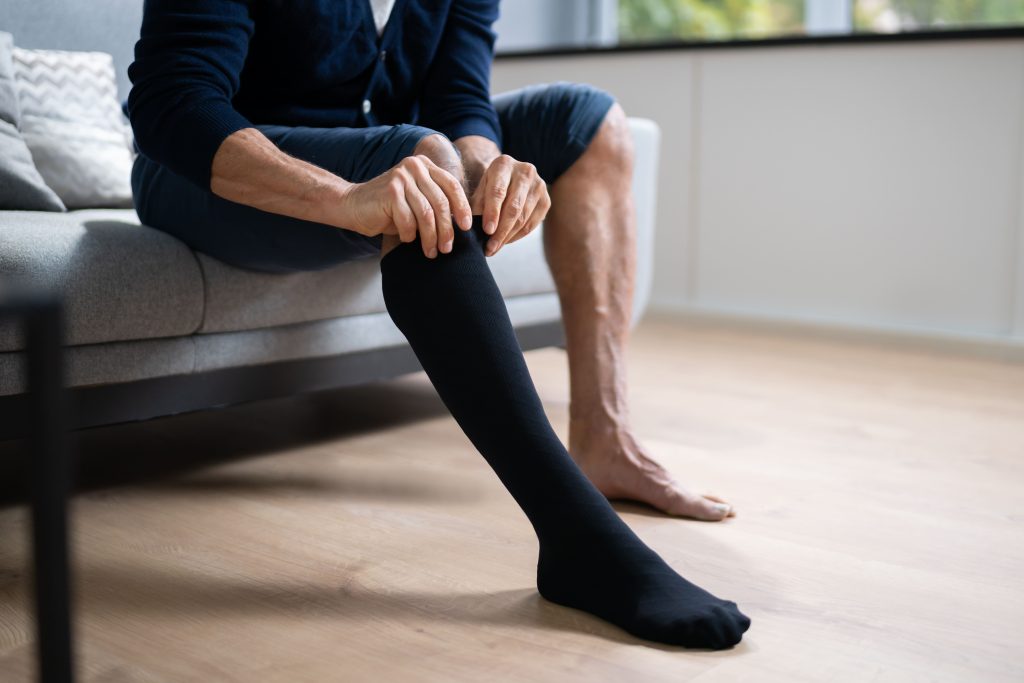
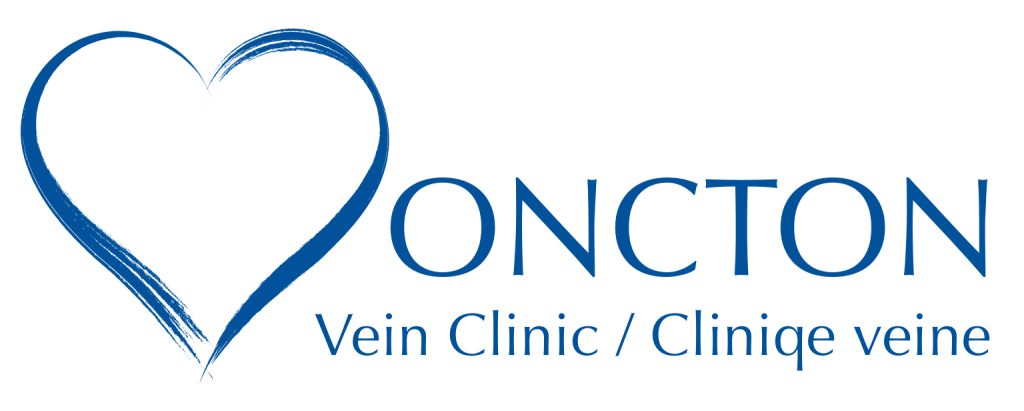

100 Arden Street (Suite 105)
Moncton, NB E1C4B7
